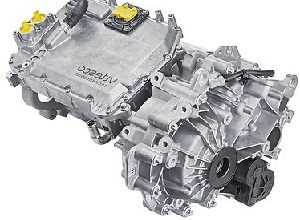Hexagon and Fraunhofer develop electrochemical simulation software suite for battery design
Hexagon and Fraunhofer develop electrochemical simulation software suite for battery design.

The electrochemical simulation technology from Fraunhofer ITWM and the multi-physics material modeling and metrology software from Swedish industrial technology company Hexagon have been combined to create a new battery cell design suite.
Hexagon’s Digimat material behavior modeling program, which is a component of its HxGN Digital Materials suite, incorporates Fraunhofer ITWM’s Battery and Electrochemistry Simulation Tool (BEST) solver into their new battery design software. It is intended to facilitate effective cell design exploration while taking into consideration how manufacturing procedures affect the caliber and functionality of cells. By mimicking the electrochemical performance of novel cell designs, this will help R&D departments cut down on costly lab testing while hastening the development of cutting-edge battery technology.
A digital twin can help manufacturers cut down on expensive trial-and-error. Understanding how modifications to a cell’s internal morphology, such as particle size, shape, and surface area, impact performance is made simpler via virtual design exploration.
Using Fraunhofer’s electrochemical modeling techniques and an embedded library of battery materials, users can simulate the electrochemistry of a cell’s constituent microstructure, electrolyte, separator, active material, binder, and current collector from a single user interface for common lithium-ion cell configurations as well as zinc and sodium battery chemistries. By choosing the right materials and settings, such as particle size distribution and carbon binder distribution, this can enable improved performance outcomes including energy efficiency, longevity, and ideal charging protocols.
Designers can use Hexagon’s VGSTUDIO MAX 3D metrology software to reverse-engineer the internal structure of manufactured cells from a CT scan, allowing them to investigate how manufacturing methods impact the cell microstructure. In order to develop the best charging routine for the battery management system, they might also look into battery aging and the safety effects of cell design.



